Effects of renal denervation on kidney function in patients with chronic kidney disease: a systematic review and meta-analysis
- PMID: 37666908
- PMCID: PMC10803266
- DOI: 10.1038/s41371-023-00857-3
Effects of renal denervation on kidney function in patients with chronic kidney disease: a systematic review and meta-analysis
Abstract
The present study aims to evaluate the clinical outcomes following renal denervation (RDN) for hypertensive patients with chronic kidney disease (CKD). Prospective studies published between January 1, 2010 and November 15, 2022 where systematically identified for RDN outcomes on office and ambulatory blood pressure, estimated glomerular filtration rate (eGFR), creatinine and procedural characteristics from three online databases (Medline, PubMed, EMBASE). Random effects model to combine risk ratios and mean differences was used. Where possible, clinical outcomes were pooled and analyzed at 6, 12 and 24 months. Significance was set at p ≤ 0.05. 11 prospective trials, with a total of 226 patients with treatment resistant HTN receiving RDN met the inclusion criteria. Age ranged from 42.5 ± 13.8 to 66 ± 9. Main findings of this review included a reduction in systolic and diastolic office blood pressure at 6 [-19.8 (p < 0.00001)/-15.2 mm Hg (p < 0.00001)] and 12 months [-21.2 (p < 0.00001)/-9.86 mm Hg (p < 0.0005)] follow-up compared to baseline. This was also seen in systolic and diastolic 24-hour ambulatory blood pressure at 6 [-9.77 (p = 0.05)/-3.64 mm Hg (p = 0.09)] and 12 months [-13.42 (p = 0.0007)/-6.30 mm Hg (p = 0.001)] follow-up compared to baseline. The reduction in systolic and diastolic 24-hour ambulatory blood pressure was maintained to 24 months [(-16.30 (p = 0.0002)/-6.84 mm Hg (p = 0.0010)]. Analysis of kidney function through eGFR demonstrated non-significant results at 6 (+1.60 mL/min/1.73 m2, p = 0.55), 12 (+5.27 mL/min/1.73 m2, p = 0.17), and 24 months (+7.19 mL/min/1.73 m2, p = 0.36) suggesting an interruption in natural CKD progression. Similar results were seen in analysis of serum creatinine at 6 (+0.120 mg/dL, p = 0.41), 12 (+0.100 mg/dL, p = 0.70), and 24 months (+0.07 mg/dL, p = 0.88). Assessment of procedural complications deemed RDN in a CKD cohort to be safe with an overall complication rate of 4.86%. With the current advances in RDN and its utility in multiple chronic diseases beyond hypertension, the current study summarizes critical findings that further substantiate the literature regarding the potential of such an intervention to be incorporated as an effective treatment for resistant hypertension and CKD.
© 2023. The Author(s).
Conflict of interest statement
The authors declare no competing interests.
Figures
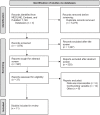
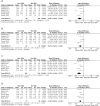
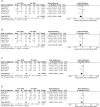

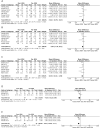
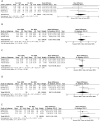
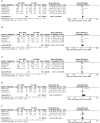
Similar articles
-
Angiotensin-converting enzyme inhibitors and angiotensin receptor blockers for adults with early (stage 1 to 3) non-diabetic chronic kidney disease.Cochrane Database Syst Rev. 2023 Jul 19;7(7):CD007751. doi: 10.1002/14651858.CD007751.pub3. Cochrane Database Syst Rev. 2023. PMID: 37466151 Free PMC article.
-
Long-Term Safety and Efficacy of Renal Denervation: 24-Month Results From the SPYRAL HTN-ON MED Trial.Circ Cardiovasc Interv. 2025 Jul;18(7):e015194. doi: 10.1161/CIRCINTERVENTIONS.125.015194. Epub 2025 May 20. Circ Cardiovasc Interv. 2025. PMID: 40391448 Free PMC article. Clinical Trial.
-
Early referral strategies for management of people with markers of renal disease: a systematic review of the evidence of clinical effectiveness, cost-effectiveness and economic analysis.Health Technol Assess. 2010 Apr;14(21):1-184. doi: 10.3310/hta14210. Health Technol Assess. 2010. PMID: 20441712
-
Renal denervation for resistant hypertension.Cochrane Database Syst Rev. 2021 Nov 22;11(11):CD011499. doi: 10.1002/14651858.CD011499.pub3. Cochrane Database Syst Rev. 2021. PMID: 34806762 Free PMC article.
-
Effect of renal denervation on glucose metabolism in hypertensive patients with and without chronic kidney disease.Clin Kidney J. 2025 Jun 18;18(7):sfaf184. doi: 10.1093/ckj/sfaf184. eCollection 2025 Jul. Clin Kidney J. 2025. PMID: 40625696 Free PMC article.
Cited by
-
Renal Denervation as a Novel Therapeutic Approach for Resistant Hypertension: Mechanisms, Efficacy and Future Directions.High Blood Press Cardiovasc Prev. 2025 May;32(3):227-254. doi: 10.1007/s40292-024-00696-4. Epub 2024 Nov 23. High Blood Press Cardiovasc Prev. 2025. PMID: 39580579 Review.
-
Effects of renal denervation on the kidney: albuminuria, proteinuria, and renal function.Hypertens Res. 2024 Oct;47(10):2659-2664. doi: 10.1038/s41440-024-01709-4. Epub 2024 May 17. Hypertens Res. 2024. PMID: 38760521 Review.
-
Aspects of renal function and renal artery anatomy as indications for renal denervation.Hypertens Res. 2024 Oct;47(10):2711-2717. doi: 10.1038/s41440-024-01860-y. Epub 2024 Aug 29. Hypertens Res. 2024. PMID: 39210084 Review.
-
Patient-Specific Factors Predicting Renal Denervation Response in Patients With Hypertension: A Systematic Review and Meta-Analysis.J Am Heart Assoc. 2024 Jul 16;13(14):e034915. doi: 10.1161/JAHA.124.034915. Epub 2024 Jul 9. J Am Heart Assoc. 2024. PMID: 38979821 Free PMC article.
References
-
- Kyu HH, Abate D, Abate KH, Abay SM, Abbafati C, Abbasi N, et al. Global, regional, and national disability-adjusted life-years (DALYs) for 359 diseases and injuries and healthy life expectancy (HALE) for 195 countries and territories, 1990–2017: a systematic analysis for the Global Burden of Disease Study 2017. Lancet. 2018;392:1859–922. doi: 10.1016/S0140-6736(18)32335-3. - DOI - PMC - PubMed
-
- Garofalo C, Borrelli S, Pacilio M, Minutolo R, Chiodini P, de Nicola L, et al. Hypertension and Prehypertension and Prediction of Development of Decreased Estimated GFR in the General Population: A Meta-analysis of Cohort Studies. Am J Kidney Dis. 2016;67:89–97. doi: 10.1053/j.ajkd.2015.08.027. - DOI - PubMed
Publication types
MeSH terms
LinkOut - more resources
Full Text Sources
Medical
Research Materials
Miscellaneous

